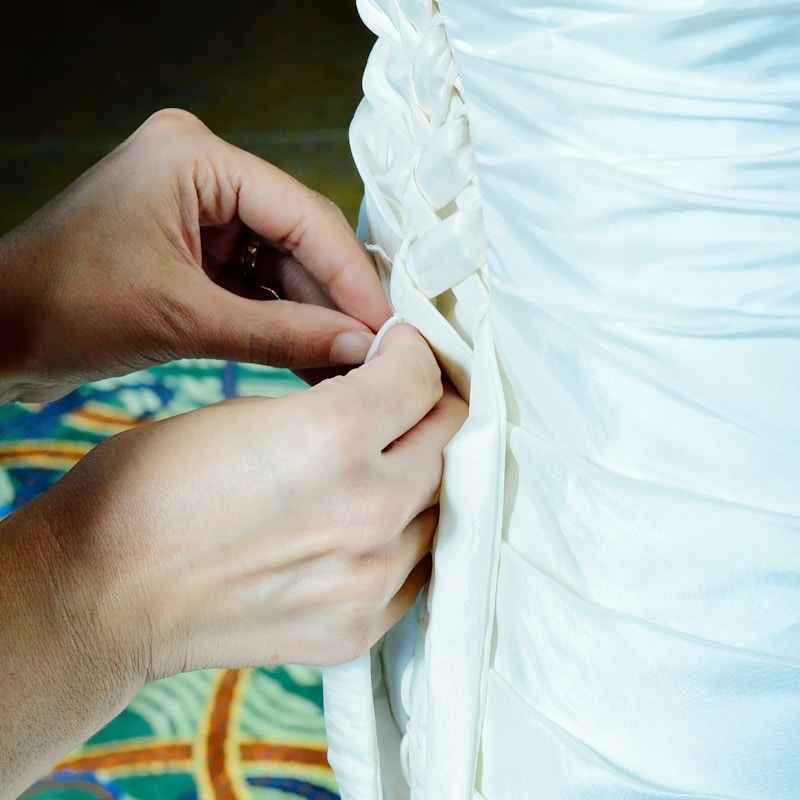Creating Contrast: Layering Different Fabrics in Bridal Dresses
Creating Contrast: Layering Different Fabrics in Bridal Dresses
In the world of bridal fashion, the art of layering different fabrics creates stunning contrasts that can elevate a wedding dress from ordinary to extraordinary. As brides seek unique ways to express their personalities on their special day, utilizing various textures, colors, and fabrics offers an innovative approach to bridal design. This article explores the nuances of creating contrast through fabric layering in bridal dresses, including styles, trends, and tips for brides-to-be.
The Magic of Fabric Layering
Layering fabrics in bridal dresses is akin to painting with textiles. Different materials can convey various moods, making the dress not only a symbol of the wedding but also a testament to the bride's individuality. When done correctly, the combination of fabrics can enhance the silhouette and create visual interest. Here are some popular fabrics commonly layered in bridal gowns:
| Fabric Type | Characteristics |
| Tulle | Lightweight, airy, often used for skirts and overlays. |
| Satin | Luxurious, glossy finish; typically used for the main bodice. |
| Lace | Intricate, timeless, adds texture and detail to the gown. |
| Chiffon | Soft, flowing fabric casting gentle layers; perfect for romantic looks. |
| Organza | Stiffer than chiffon, adds structure and volume. |
| Velvet | Rich in texture, ideal for evening weddings. |
Creating Aesthetic Appeal
The goal of layering different fabrics is to create a stunning visual effect. When combining materials, it's crucial to consider the dress's overall aesthetic. The interplay between sheer and opaque fabrics can result in a captivating look. For example, a lace overlay on a satin bodice can soften the appearance while adding texture. This technique is particularly popular among modern brides who appreciate both classic and contemporary elements.

Understanding Color Contrast
Color also plays an integral role in fabric layering. Using contrasting colors can draw attention to specific areas of the dress, accentuating the bride's shape and beauty. For instance, a classic white satin gown with a blush tulle overlay can create a soft yet striking contrast. Similarly, deeper hues like burgundy or navy can add a dramatic flair, perfect for evening weddings.
Combining Patterns
Combining patterns is another effective method to create contrast in bridal designs. Florals, stripes, and geometric designs can coexist beautifully when layered skillfully. It’s essential, however, to maintain balance; too many clashing patterns can make the gown appear chaotic. Pairing a floral lace with a solid base can provide a harmonious, eye-catching look.
Styles of Bridal Dresses with Fabric Layers
Several styles of bridal dresses lend themselves well to fabric layering. Here are some examples:
- A-Line Gowns: This universally flattering silhouette allows for layering at the skirt, offering a beautiful flow.
- Ball Gowns: These dramatic dresses benefit from layers of tulle or organza, creating volume and grandeur.
- Mermaid Dresses: Combining different fabrics at the bodice and skirt leads to a captivating silhouette that highlights curves.
- Bohemian Styles: These often feature mixed fabrics and textures, ideal for relaxed, outdoor weddings.
Choosing the Right Fabrics for Your Wedding Theme
Selecting the right fabrics is vital for achieving the desired aesthetic for the wedding theme. For a beach wedding, lighter materials like chiffon or tulle are optimal, as they provide breathability with elegance. Alternatively, a luxurious velvet gown would be more suitable for a winter wedding, exuding warmth and sophistication.
Practical Tips for Brides
Here are some practical tips for brides looking to layer fabrics in their bridal dress:
- Consult with a Designer: Collaborating with a professional can help turn your vision into reality. They can suggest fabric combinations that work harmoniously.
- Try Different Combinations: Experiment with various fabric swatches to see how they interact with one another and with your skin tone.
- Consider Weight and Fit: Make sure that the heavier fabrics do not overwhelm the design of the dress. Balancing weights ensures a comfortable fit.
- Pay Attention to Movement: The dress should allow for movement. Ensure the layered fabrics do not restrict your ability to dance or walk comfortably.
Trending Fabric Layering Techniques
Fashion is ever-evolving, and bridal dress trends are no exception. Some current trends in fabric layering include:
- Mixing Textures: Combining lace with sequins for a lavish, opulent look.
- Color Blocking: Bold, contrasting colors layered strategically for a modern twist.
- Sheer Sleeves: Incorporating sheer lace or chiffon sleeves adds elegance and allure.
- Detachable Overlays: Brides are opting for versatility by choosing gowns with removable layers, allowing for a transformation from ceremony to reception.
Conclusion
In summary, creating contrast through layering different fabrics in bridal dresses allows brides to express their individual style while ensuring a stunning visual impact on their wedding day. By understanding the importance of color choice, fabric types, and skull shapes, brides can curate a gown that not only looks exceptional but also feels personal and meaningful. Whether you're drawn to the romance of lace, the sophistication of satin, or the whimsy of tulle, layering offers endless possibilities. Remember, every bride deserves to shine on their special day, and the right fabric combination can make that happen. As you embark on your wedding journey, consider these tips and trends to find the perfect dress that encapsulates your unique beauty.
